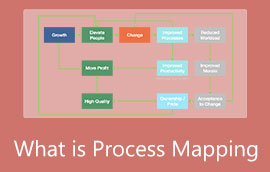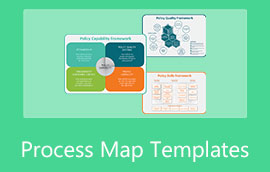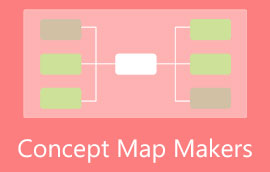Empathy Map: Its Defenition, Benefits, and Process
Let us learn the meaning and importance of the empathy map. There are many different kinds of mindmaps, charts, and diagrams, but let us focus on this empathy map’s benefits. As its name gives you an idea of what it is all about, its purpose is more than that. This is because it doesn’t only focus on emotions but can also be linked to building a product that needs a commercial presentation. Yes, this is one of the ways for the marketing department of a company to capture the attention of their prospective clients or buyers. If this information excites you, then feed yourself more to the in-depth meaning of the empathy map and its examples by reading the complete information below.

- Part 1. What Exactly is the Empathy Map?
- Part 2. Benefits of Empathy Mapping
- Part 3. Guidelines in Making an Empathy Map
- Part 4. Tips on Making Empathy Map
- Part 5. Bonus: The Best Mindmap Tool for Brainstorming
- Part 6. FAQs regarding Empathy Maps
Part 1. What Exactly is the Empathy Map?
As its name suggests, empathy is all about understanding the situation of others. It has the exact meaning of walking in the shoes of someone else. The empathy map, on the other hand, is an illustration that depicts the rapport between the product makers and the buyers. Since the empathy map designs thinking that shows the feelings, thoughts, and concerns of the people, it holds a significant factor in producing new products to be accepted in the market. It is because this kind of map forces the marketing team to identify the customers' wants and needs by studying their feelings and thoughts about the product.

Moreover, a person who wants to create an empathy map must know the four quadrants it should contain. And as you see in the image above, these quadrants consist of the total reaction, such as the feelings, actions, thoughts, and the echo or say of the people pertaining to the product prior to its release. Please see the following to give you more information about the said quadrants that complete the definition of an empathy map.
Feeling - In this quadrant, it shall contain the information regarding the emotion. It talks about the customer’s worries, excitement, and feelings about the experiences.
Thought - Pertains to what the customer thinks about the product and his or her thoughts while using the product.
Action - as its name gives, this quadrant will show the behavior and the action made by the customer.
Echo/say - the echo refers to what the customers comment about the product. You must fill this quadrant with the exact wordings of the customer. For this reason, one must record their interviews while giving out the trial session.
Part 2. Benefits of Empathy Mapping
Having the information will probably give you an idea of the advantages of empathy mapping. So, to establish your intuition, see some of the most significant benefits of making an empathy map below.
1. It Boosts the Product Information
As we tackled previously, empathy mapping plays a very crucial role in improving the product, for it shows the reflection of its review. This also means that this kind of map is very efficient in designing the product. We all know how vital the product's function and design are to get higher usage. Thus, by using this empathy map in marketing, product makers will be able to improve the brand to meet the target audiences’ wants and needs.
2. Help You Understand People
Through this map, your ability to see other people’s perspectives will develop. And because of that, you will understand what and how do they need in a product.
Part 3. Guidelines in Making an Empathy Map
If you decide to create your map, you might find the need to follow the guidelines below.
1. Make a Single Map
Remember that you should create one map for each person in making an empathy map. Mixing all the persona in just one map will not provide you with comprehensive answers.
2. Define the Subject
Start your map by knowing who your subject or the persona is. A piece of information about what the subject does, the address, and a basic description of what the subject was doing before you administered the interview will help you emphasize the situation.
3. Start Questioning the Subject
It’s now time to perform the interview. Start asking essential questions to the persona. Remember to ask questions related to the brand to give feedback to the mentioned quadrants.
4. Start the Brainstorming
After that, you may start the brainstorming on the customer’s empathy map. But of course, in brainstorming, all the survey conductors in your team should participate. After all, you all have different feedback based on your interview with the respondents. Give all your thoughts and analysis about the respondents’ answers.
Part 4. Tips on Making Empathy Map
We prepared some tips for you that will be very helpful for you. Note that you should do the following tips prior to doing the session.
1. Know your primary purpose of mapping
Before making the map, it is very crucial to have a rational understanding of why you need to create one. Determine whether you need to create the empathy map to have a comprehensive understanding of the customers in general or understand the specific situation.
2. Examine the gathered information
A comprehensive empathy map contains information that is based on facts. Therefore, after collecting the information from the respondents, examining them will be very important. In line with this, it is necessary to ask your teammates to examine the data via a brainstorming process.
3. Ensure you have enough time duration
Although doing the session won’t take too much time, it will only last about an hour. Still, giving yourself and the team extra minutes to be included prior to and after the session will make the purpose of the empathy map more effective.
4. Summon a skilled moderator
If you still don’t know, a moderator is the one that will facilitate the questions to the respondents. Through the questions that the moderator gives, team members will be able to collect the correct information for their brainstorming.
Part 5. Bonus: The Best Mindmap Tool for Brainstorming
Instead of writing the information from your brainstorming session on paper, why not use MindOnMap, the best mind mapping tool online. This program contains numerous figures, themes, icons, fonts, colors, and other elements to help you create comprehensive mind maps while brainstorming. Furthermore, MindOnMap will enable you to collab with your teammates. So whether you are with them or not, you will be able to collect a piece of inclusive information from them for your empathy map. Although it is an online tool, its security will still absolutely make you fall in love with it. Not just that, because it will enable you to access and use it repeatedly for free!
Secure Download
Secure Download
For this reason, we give you the complete procedure on how you can use this fantastic tool for your brainstorming session.
Launch your browser and visit the official website of MindOnMap. Upon reaching it, click the Login button, and sign in using your email account.

After that, go to the New option and choose a template you want to use for brainstorming. Don’t hesitate to choose the ordinary ones, for you can still create your own themes with them. Hence, for now, let's pick one with a theme.

Once you click your chosen template, the tool will bring you to int main canvas. Now, navigate to its Menu Bar on the right part to meet the beautiful elements you can apply to the map. You may also need to see the Hotkeys option to have an assistant in expanding the map.

Once you finish the map, hit the Share button to collaborate with your team, or the Export button to save the map to your device.

Further Reading
Part 6. FAQs regarding Empathy Maps
Can I export an empathy map design thinking in PDF?
Yes, as long as you use an empathy map maker that supports PDF outputs. Hence, for your brainstorming session, MindOnMap will enable you to have PDF, Word, JPG, PNG, and SVG outputs.
Can I turn the empathy map into a poster?
Yes. Turning your map into a poster and hanging it in your office will be great. This way, it can remind you about the session and the respondents’ feelings.
Is it easy to make an empathy map in Paint?
Creating your empathy map in Paint will be significant only for the simple ones. However, for the complex maps, we don’t recommend you to use them.
Conclusion
Creating an empathy chart will lead you to an improved product. Please don’t do it alone because, as the saying goes, two heads are better than one. Nevertheless, excellent empathy mapping all comes with comprehensive brainstorming. So, learn the best brainstorming procedure by following the bonus part of this article! Use MindOnMap now










